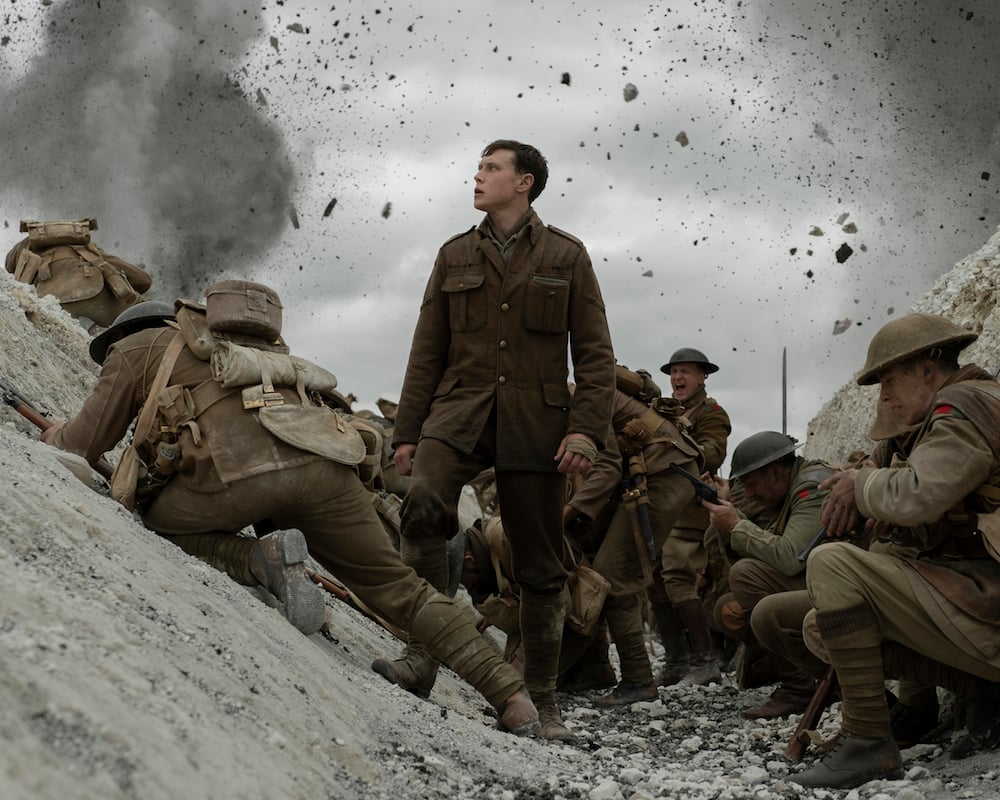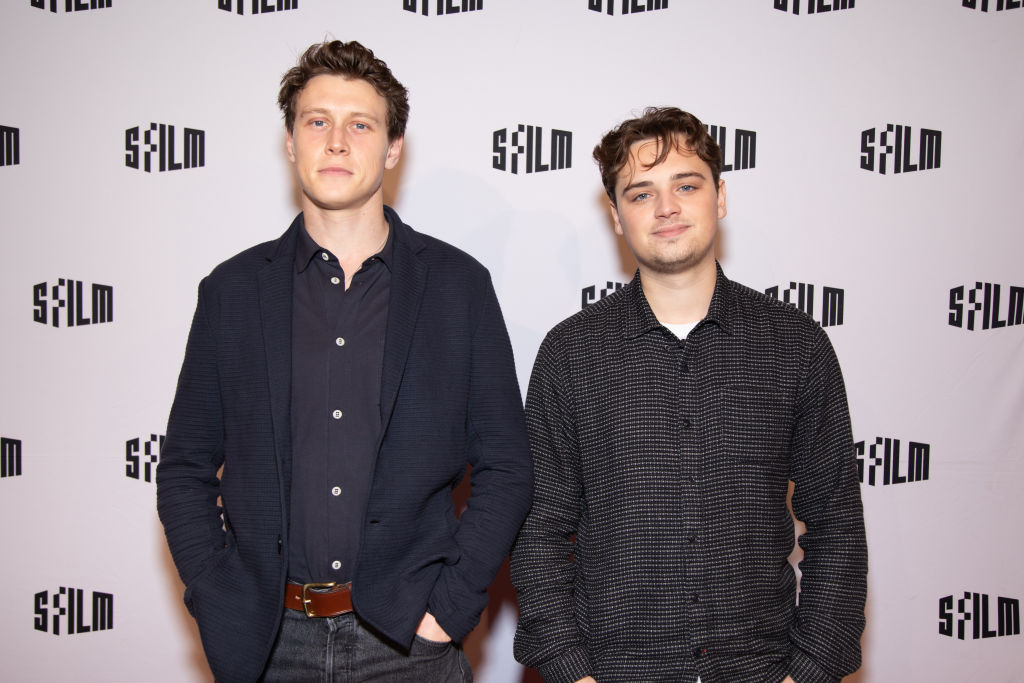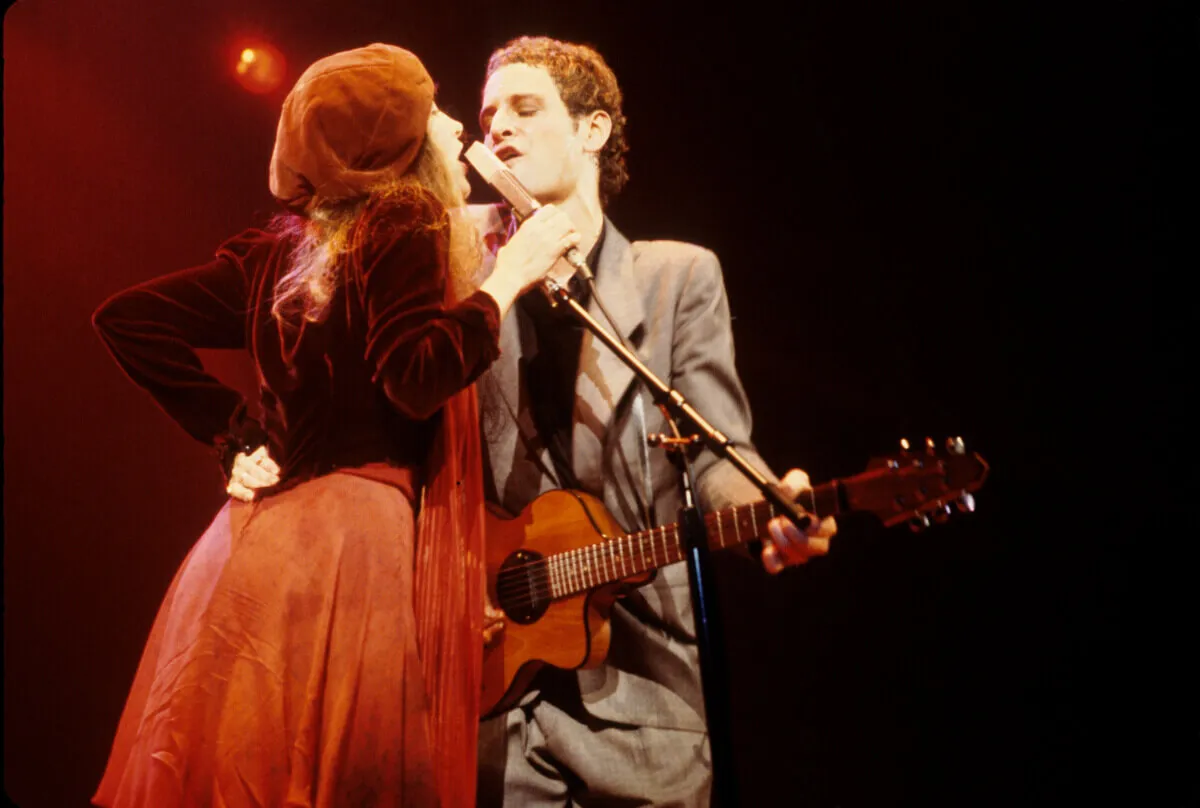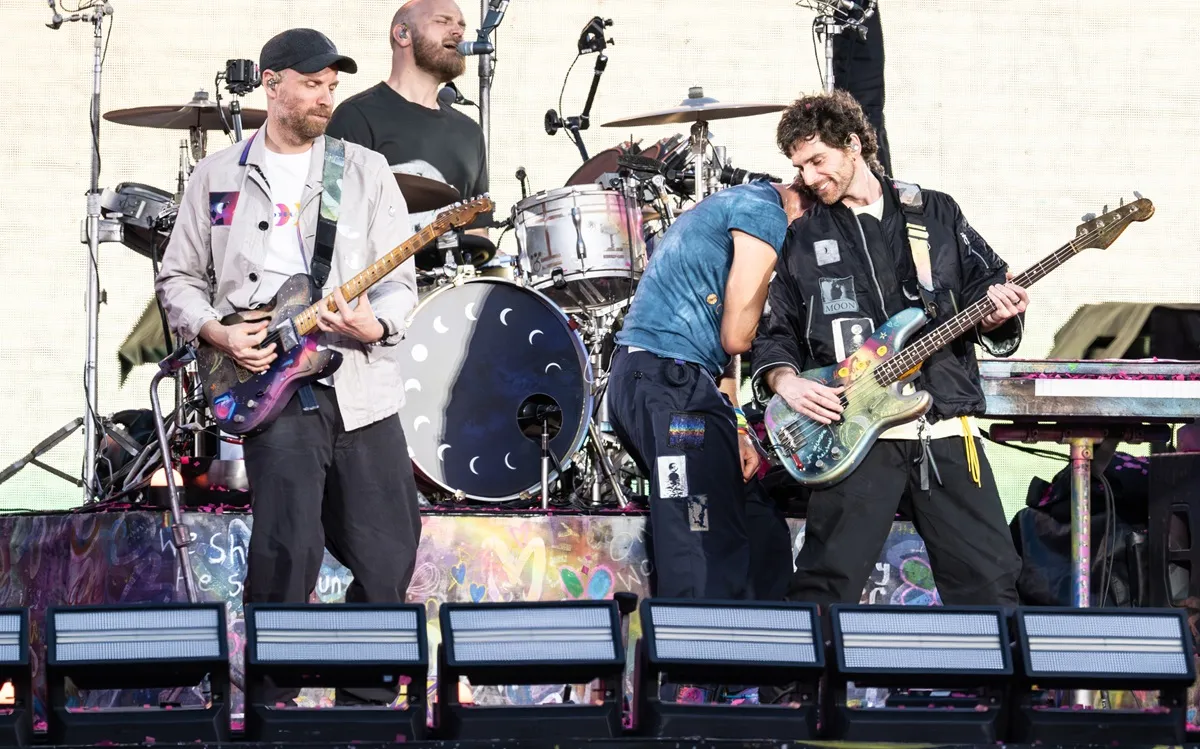‘1917’: The Actors Said the Longest Take in the Movie Was Only 8 Minutes Long
There are plenty of gorgeous movies up for the Best Picture nomination for the 2020 Academy Awards, but few are as technically astounding as 1917. The film follows young World War I soldiers, Lance Corporals Tom Blake and Will Schofield, as they’re set on a mission to deliver a message to stop their fellow British soldiers from attacking the Germans. And the entire film is created to look like one long, continuous shot as the soldiers breach enemy lines and fight for their lives.
While the entire film looks like the cameras followed the soldiers through the entire ordeal, the illusion was created using camera trickery and plenty of cinematographic expertise. And actors George MacKay and Dean-Charles Chapman who played the two leads explained the longest takes were around seven to eight minutes each.
The crew had to go to extremes to prepare to film ‘1917’

Creating a war movie to look like one shot from start to finish is no easy task. And it took extreme planning on the part of the director, Sam Mendes, and cinematographer Roger Deakens.
Insider explains the crew for 1917 built models of every set they would have way before they considered filming. The models assisted the crew in planning exactly what the scene would look like as the actors moved through it. Not only that, but because one scene relied on light from flares to illuminate a ruined city at night, the crew was able to use a light contraption on the mini model of the city to plan how the shoot would really appear. The light contraption “traced which direction the shadows would move and how light would fall through the building’s windows.”
Once the real sets were built, they had to accommodate both actors and the cameras, as the cameras followed the actors through the landscapes. They had cameras specifically built just for the movie in order to properly convey the one-shot illusion, too. And Insider notes the camera could never move backward, either, as the film follows the soldiers as they pressed on through the war.
Actors George MacKay and Dean-Charles Chapman said it took ‘months and months’ of rehearsal
Creating the illusion successfully in 1917 took proper planning, perfect execution, and of course, many, many takes. Because the film crew relied heavily on natural lighting for many of the scenes in the trenches, there were plenty of days when the weather prevented them from shooting at all. And MacKay and Chapman, the two leads, told BUILD that it took multiple months of rehearsals to get it right.
“We did months and months and months of rehearsals. We did six months of rehearsals in order to prepare for what we had to do,” Chapman said.
“This is a bit more like a play … you can’t cut into it,” MacKay added. “You can’t cut about with the coverage. We had to decide upon the emotional rhythm. … The timing of the dialogue affects the size of the set. And so everything had to be kind of be worked from the ground up.”
The actors said the longest shot was 7 to 8 minutes

With the movie coming right under two hours in runtime, viewers may wonder how long each scene really was. While it looks like the scenes didn’t cut for 20 to 30 minutes, Chapman said the longest shot was actually only around eight minutes long.
“I think one of the longest ones was eight minutes? Seven, eight minutes? Chapman answered when the interviewer asked. And MacKay nodded in agreement. “It’s a really tense scene. … I actually couldn’t stop crying after we did the scene because it was so tense. It was going on for eight minutes, like I genuinely got caught up in it.”
“It’s so immersive. And not only is it immersive to watch but as an actor being there, it’s just the best thing ever,” Chapman continued.
MacKay then added that the film used over 400 extras to make the scenes come to life even more. And the scene toward the end of the film that shows MacKay’s character running perpendicular to the men rushing the battlefield was “exhilarating,” though it didn’t go exactly as planned. MacKay bumped into two of the extras as he was running, but the film crew chose to keep the scene, as it showed the chaos of war even better than they originally scripted.
We’ll have to see how 1917 fairs with the Academy on Feb. 9!
Check out Showbiz Cheat Sheet on Facebook!


